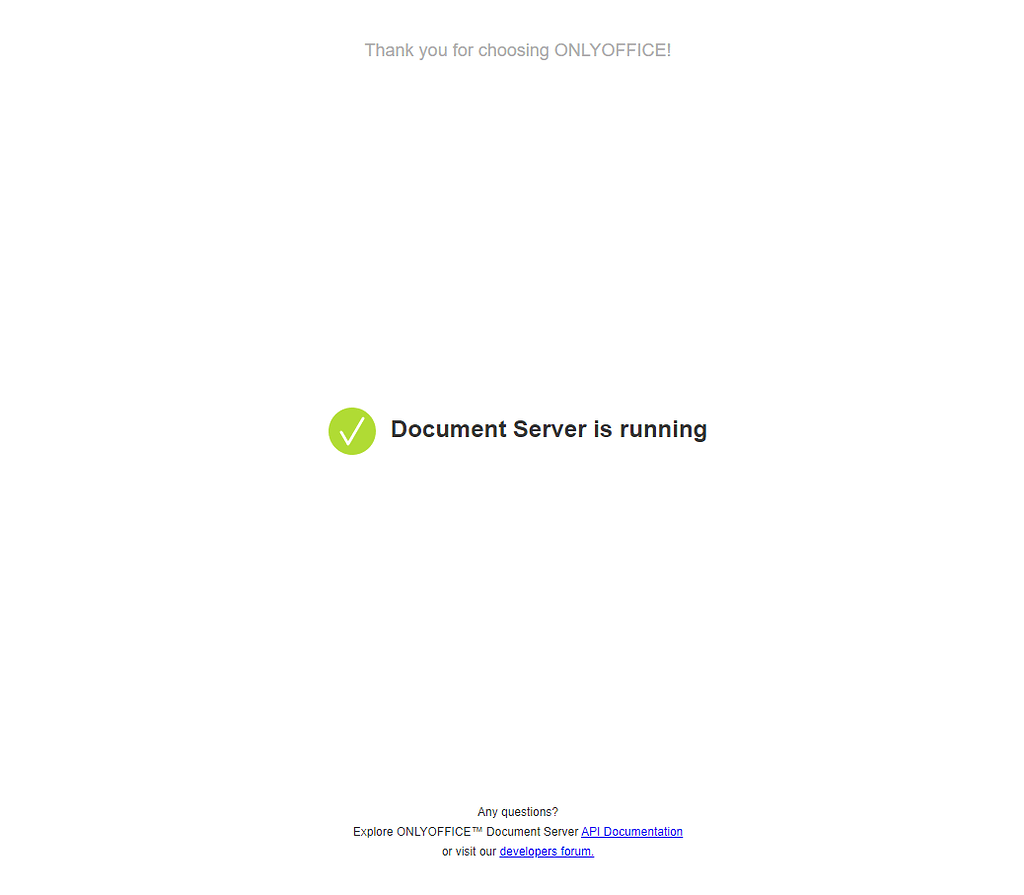

- #Onlyoffice docker ip address full#
- #Onlyoffice docker ip address password#
- #Onlyoffice docker ip address download#
Sudo chmod 0644 /app/onlyoffice/mysql/conf.d/onlyoffice.cnfĬreate the SQL script which will generate the users and issue the rights to them. Log-error = /var/log/mysql/error.log" > /app/onlyoffice/mysql/conf.d/onlyoffice.cnf Then create the onlyoffice network: sudo docker network create -driver bridge onlyofficeĪfter that you need to create MySQL server Docker container. Sudo mkdir -p "/app/onlyoffice/MailServer/logs" Sudo mkdir -p "/app/onlyoffice/MailServer/data/certs" Sudo mkdir -p "/app/onlyoffice/mysql/logs" Ĭhown 999:999 /app/onlyoffice/mysql/logs Sudo mkdir -p "/app/onlyoffice/mysql/initdb" Sudo mkdir -p "/app/onlyoffice/mysql/data" Sudo mkdir -p "/app/onlyoffice/mysql/conf.d" To do that go to the /etc/default/docker file and change the IP address in the following line to the IP address of a DNS server in your local network:įor the RPM based operating systems like CentOS, the configuration file can be located here: /etc/docker/daemon.jsonīefore you start the installation you need to create the following folders: If your ONLYOFFICE Groups is not going to have access to the Internet, we recommend that you change the default Docker DNS address to the address of your local DNS server. Once you make sure that all settings are correct, you can proceed to the next steps.ĭocker specifies Google DNS servers by default. If everything is correct you should see the output which contains lines like these among the others. To verify the correctness of the settings for the A record the following command is used: dig -t A mx. This means that the A record in your Domain Name System (DNS) must point to the IP address of the computer where ONLYOFFICE Mail will be installed and the Pointer (PTR) record on this computer must resolve the computer IP address to a fully-qualified domain name (FQDN) as an opposite to what A record does. We recommend that you select a name like mx. for the A record of your mail server computer. Fixed the bug with the ECHO_INFO: command not found warning.īefore you start installation of ONLYOFFICE Mail, you need to link your computer where ONLYOFFICE Mail is going to be installed with the domain selected for the mail server.Fixed the bug with the No such file or directory being shown in many cases.Fixed the bug with the Cannot load 1024-bit DH parameters from file /etc/pki/tls/dhparams.pem warning.Fixed the bug with mailbox not being removed when using third level domain (issue: wrong domain regex).Added the Python PIP manager and installation requirements.
#Onlyoffice docker ip address password#
#Onlyoffice docker ip address full#
Added the possibility to send mail messages from alias_domain, alias_address and full alias.Added backticks to the 'CREATE DATABASE' commands.


#Onlyoffice docker ip address download#
Go to let's encrypt and download certbot. If you are running on Windows, try using ManuaLE (more info below) You will either need to create a special file on your server or create a TXT record on your domain's DNS server. You can create your own certificate using Let's Encrypt. The problem that you are having is that a self-signed certificate is not trusted by anyone (anything).


 0 kommentar(er)
0 kommentar(er)
